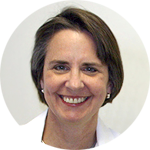A Second Opinion with Dr. Susan Sorensen

In 1996 I became a dinosaur. 
The HMO’s were dominating medicine. Instead of taking care of my patients I was taking care of their insurance companies. My staff spent half their time on the phone getting authorizations for routine tests. Thank goodness prior authorization for prescriptions weren’t common yet. More time with paperwork, reimbursements down, frustration skyrocketing, my future in medicine looked bleak.
Then my father died suddenly. He was a physician, my role model, who had always seemed happy with his practice. And the last lesson he taught me, with his death, was that if I was going to stay in medicine I needed to follow his example, take charge of my professional life, and create the medical practice that I wanted and that my patients needed. Six months later I cancelled my insurance company contracts and opened a traditional, fee-for-service solo practice and have not looked back.
No one thought this type of practice would be sustainable in the late 20th century, that it would not be financially viable, that patients would not value this type of medical care. Yet here we are, going strong 20 years later. Our mission statement: “Concierge service without concierge fees.” It works. I see patients from all walks of life who know that I am working for them, not for their insurance company. My practice style is still dinosaur, but everything else is 21st century. Elation has been a driving force in this evolution.
“E. M. R.” Anyone in practice from about 2000 on knows the angst those three letters caused. It was like Harry Potter saying Voldemort. “Ee-em-are”, say those words in a group of doctors and half would declare their intention to retire. EMR’s were clunky, prohibitively expensive time sinks. I had been using electronic prescribing for several years and was pretty satisfied with that. In 2010 I purchased a relatively inexpensive (if $1000 can be called an inexpensive for a solo practice) not very user-friendly EMR which had been written by techie MD’s for their own use but didn’t work well for non-techies with no IT department. I had evolved a little and saved money on paper, but everything else was pretty much the same. And then one day…
Sometime in the fall of 2011, I placed a routine call to a colleague to request a report. The following conversation ensued:
Medical assistant: “Sure, but it might be a little delayed, we’re going live with an EMR.”
Me: “Which one?”
Medical assistant: “Elation”
Funny how a routine chore can stimulate such change. Once off the phone I Googled Elation, explored the website, and asked for information. A few minutes later Conan was on the phone setting up an appointment, and 2 days later he was showing me and my nurse the ropes. I decided to switch to Elation that very day. I was impressed by Elation’s user-friendly interface and by Conan and Kyna’s commitment to cutting edge design principles that put users’ needs before engineering. The replication of the traditional medical chart, which evolved because it works, with all the advantages of digital technology seems like a no brainer, but no one had thought of it until they came along. Intuit had done it years before with Quicken, revolutionizing consumer banking, but Elation was the first for medicine. Here were two entrepreneurs bucking the system just as I had back in 1996. I could work with these people.
The story ends a few weeks after that meeting, Go Live Day. We had been promised as much tech support as we needed and Elation delivered—about 90 minutes. We had no downtime, no change in schedule to accommodate our change-over. No delays in patient care or lost revenue. We were up and running.
So how has Elation changed my workflow? Because the interface is similar to a traditional chart the changes have been so gradual as to be almost imperceptible from day to day, and the changes have made life easier. Everything in the chart and the schedule is at my fingertips. The profile is right there and 1 or 2 clicks take me to anything else in the chart. No more pulling charts. No more flurries of pink paper phone messages, everything is documented in real time. Physician to physician communication is simplified. The chart is available when the office is closed. I’ve saved hundreds of dollars on paper and toner and whittled my chart cabinets down from 5 to 2. There aren’t very many problems, but Tech Support responds quickly, always takes ownership of a problem and solves it just as quickly. The biggest change is that we have more time with patients because busy work is automated. I couldn’t ask for more.
This dinosaur is content in the 21st century.
About Dr. Sorensen:
Dr. Sorensen has been in practice since 1988 and in solo practice since 1996, specializing in internal medicine, hematology, and medical acupuncture in Los Altos, CA. She comes from a long line of physicians, beginning with her great grandfather, a Kansas country doctor in the late 19th century. In addition to her medical practice she teaches acupuncture and is active in the American Academy of Medical Acupuncture.






